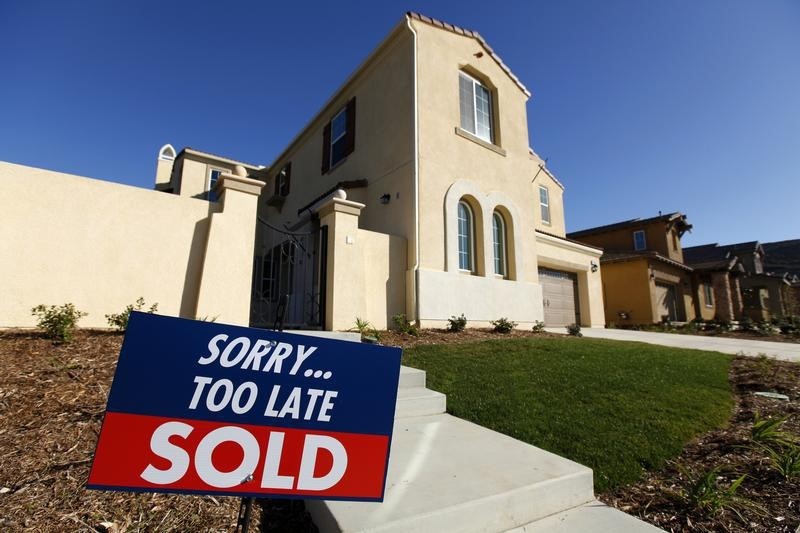Gold bars to be exempt from tariffs, White House clarifies
By Geoffrey Smith
Investing.com -- U.S. house prices hit a record high in March, fresh data showed on Wednesday, but there were fresh signs that record-high valuations and rising interest costs are slowly but surely bringing the pandemic-era boom to an end.
The median price for a U.S. home hit $375,300, up 15% from a year earlier, the National Association of Realtors said in their monthly report on the housing market. But record-high prices, higher borrowing costs and a scarcity of available inventory led the number of existing home sales to fall by 2.7% from February, and by 4.5% from a year earlier.
"The housing market is starting to feel the impact of sharply rising mortgage rates and higher inflation taking a hit on purchasing power," the NAR's chief economist Lawrence Yun said in a statement. "Still, homes are selling rapidly, and home price gains remain in the double-digits."
Yun said he expected the surge in prices to cause overall transaction levels to fall by some 10% this year, adding that house price inflation ought to moderate to 5% by the end of the year.
High prices have led to an impressive response from the supply side in the U.S. housing market: both housing starts and building permits remained near-record levels in March. However, more and more data suggest that the froth is coming off the market: the Mortgage Bankers Association said earlier Wednesday that mortgage applications fell for the 10th time in 11 weeks, by 5.0% from the previous week, as the sharp rise in bond yields discouraged both refinancing and new home loans.
The benchmark 30-year mortgage rate rose another 7 basis points last week to 5.20%, its highest level since 2009.
"Canary in the coal mine," observed Diane Swonk, chief economist with Grant Thornton, via Twitter, noting that existing home sales had fallen to their lowest level since Feb 2020. She said the trend was "still strong but clearly waning," with rising rates having a disproportionate effect on first-time buyers. The share of transactions closed by first-time buyers ticked up to 30% from 29% in March but was down from 32% a year earlier and below the 34% average found by the NAR in its survey on the national market late last year.
